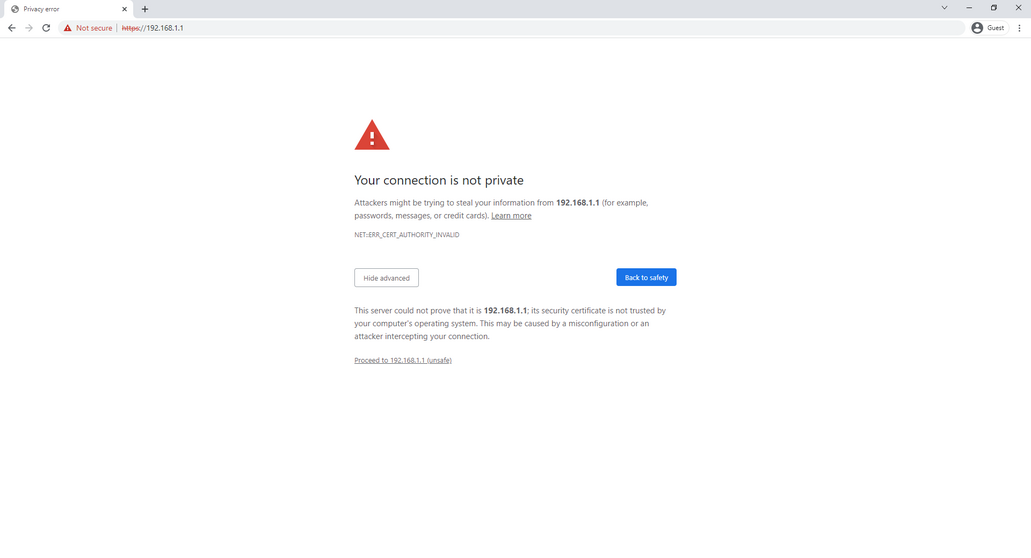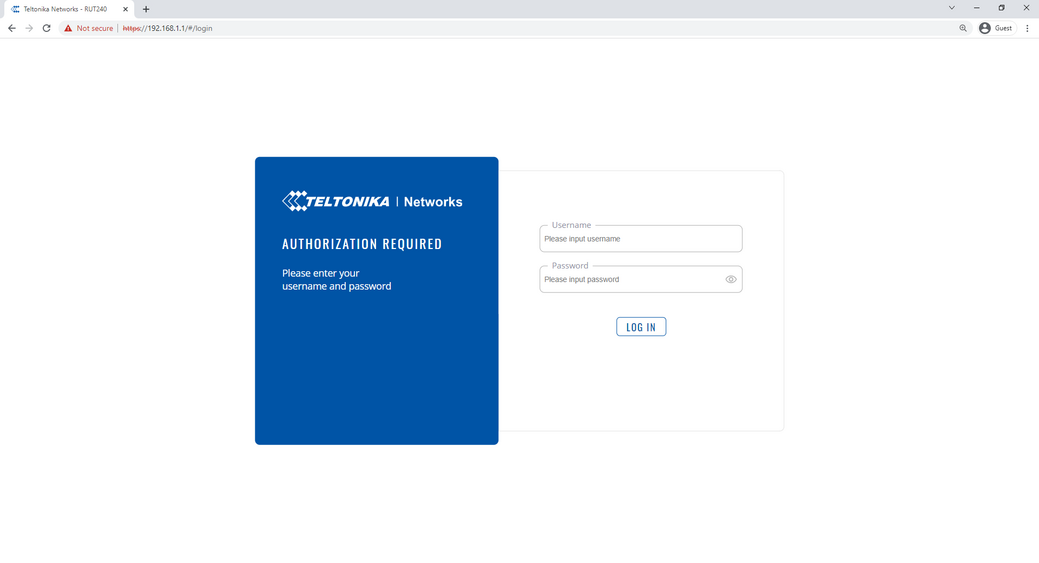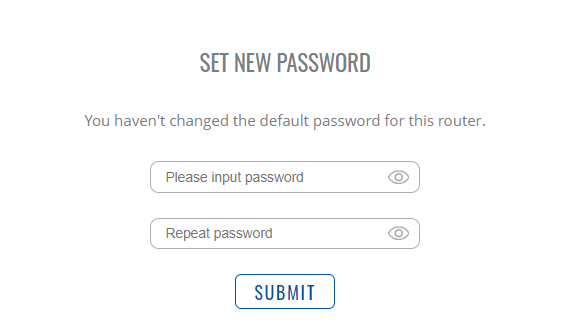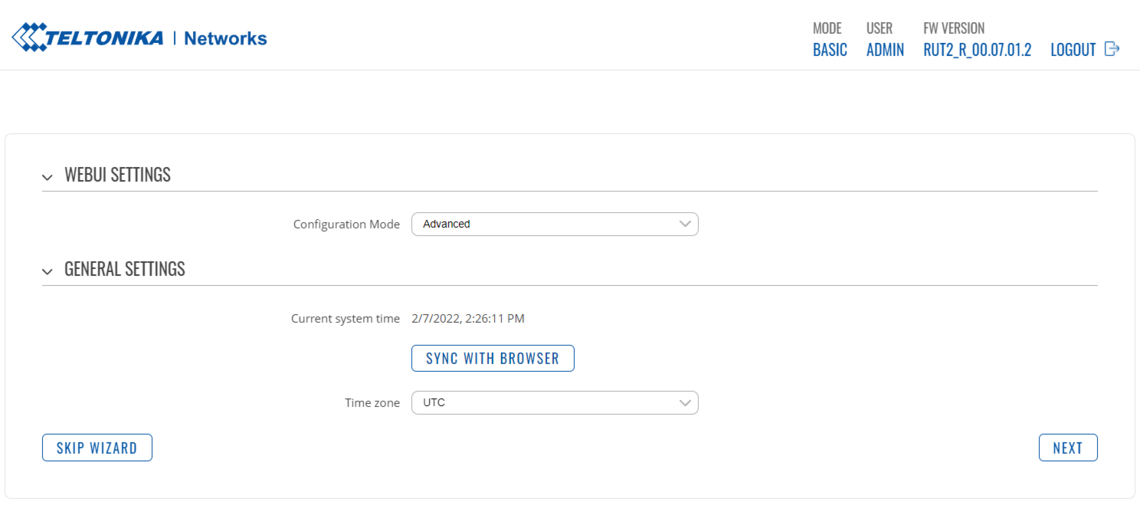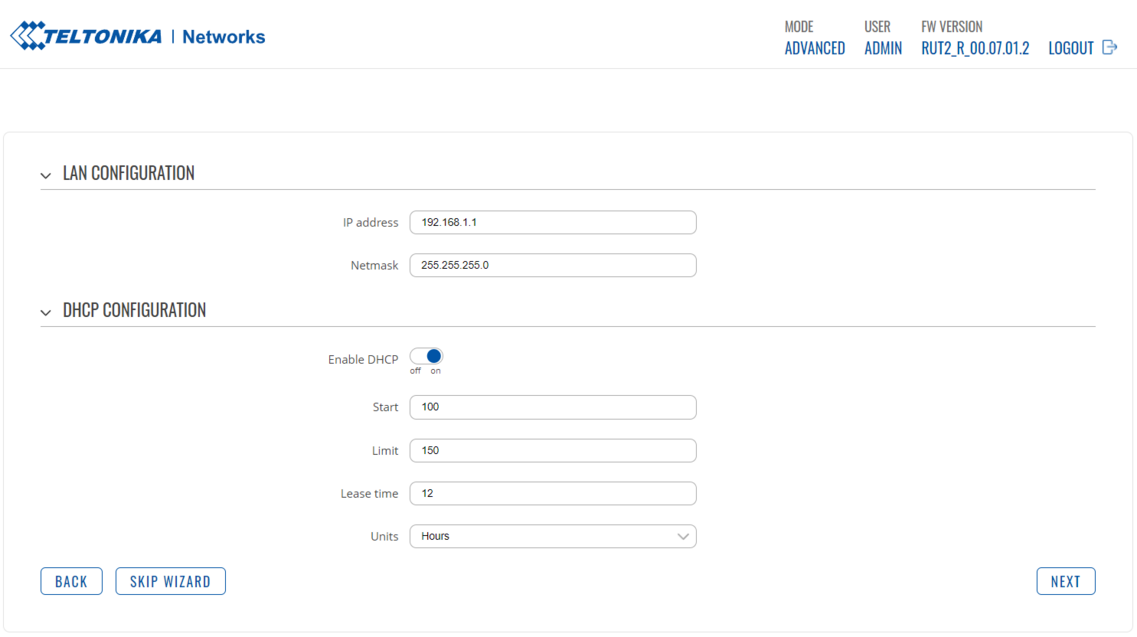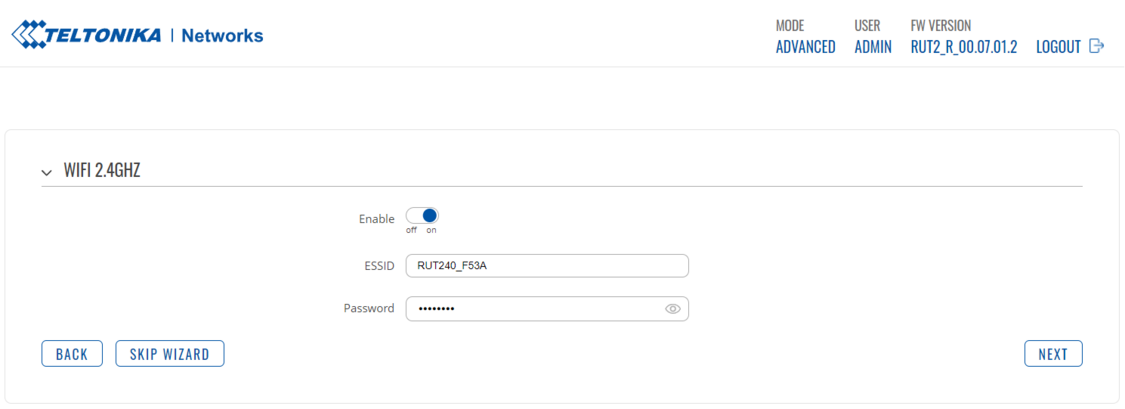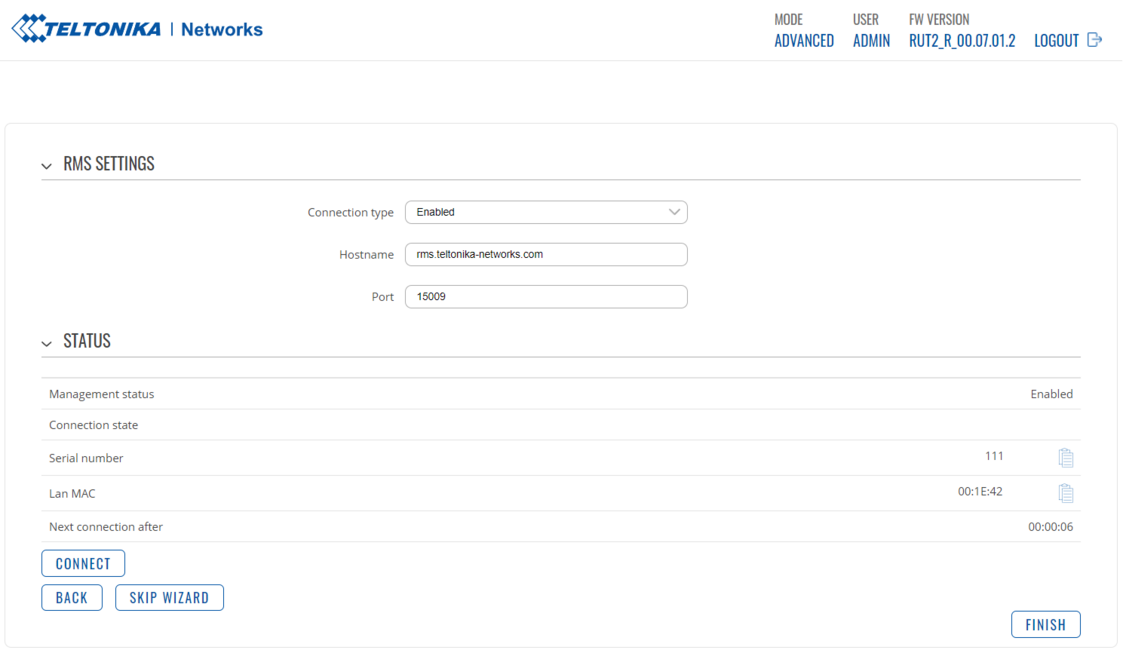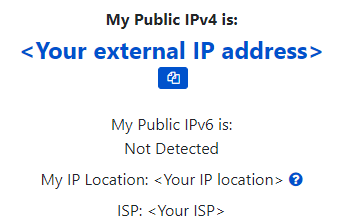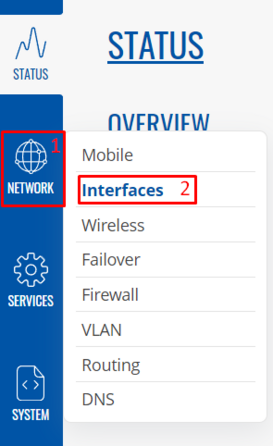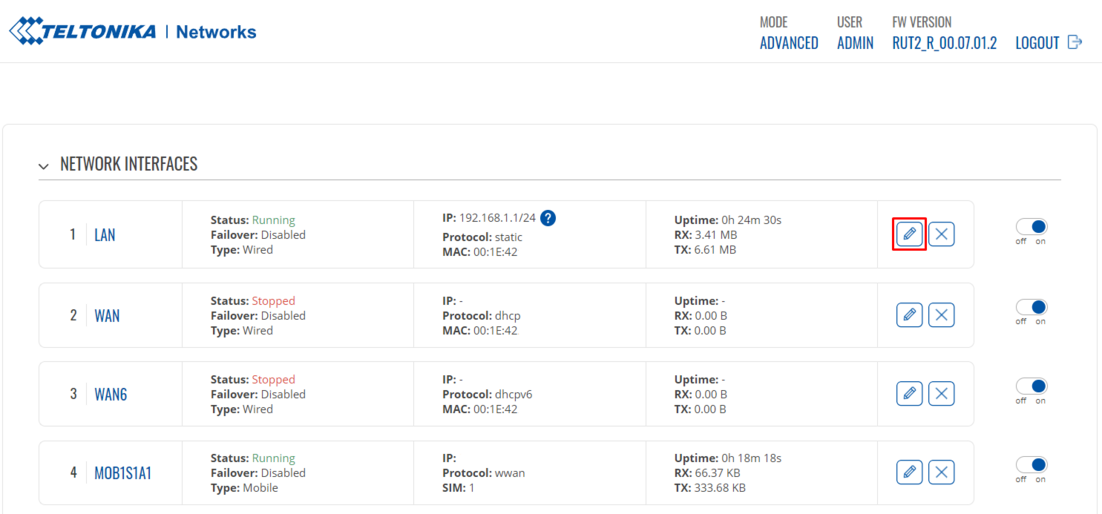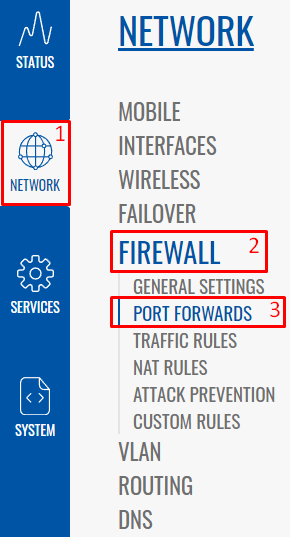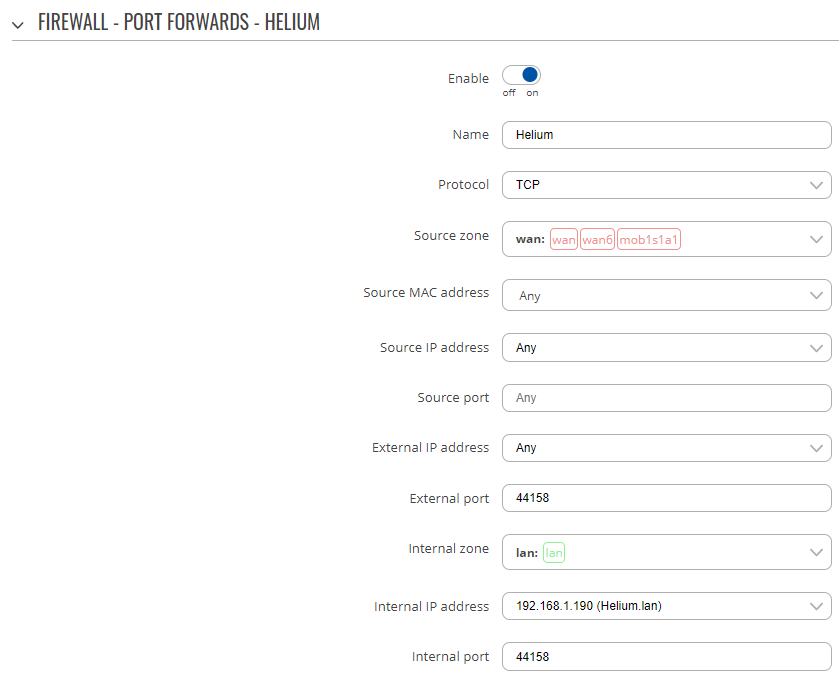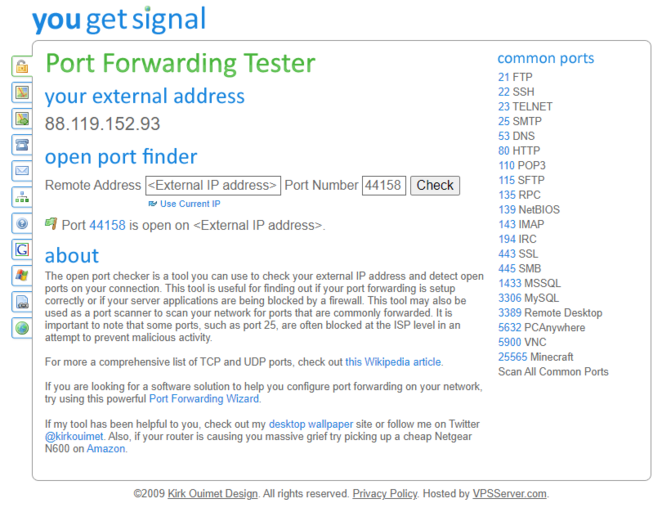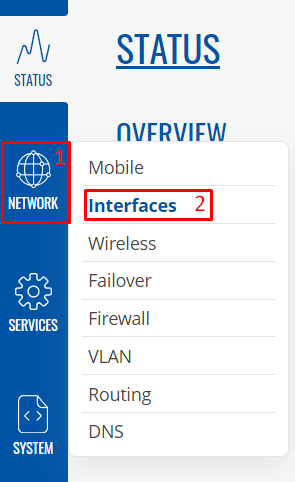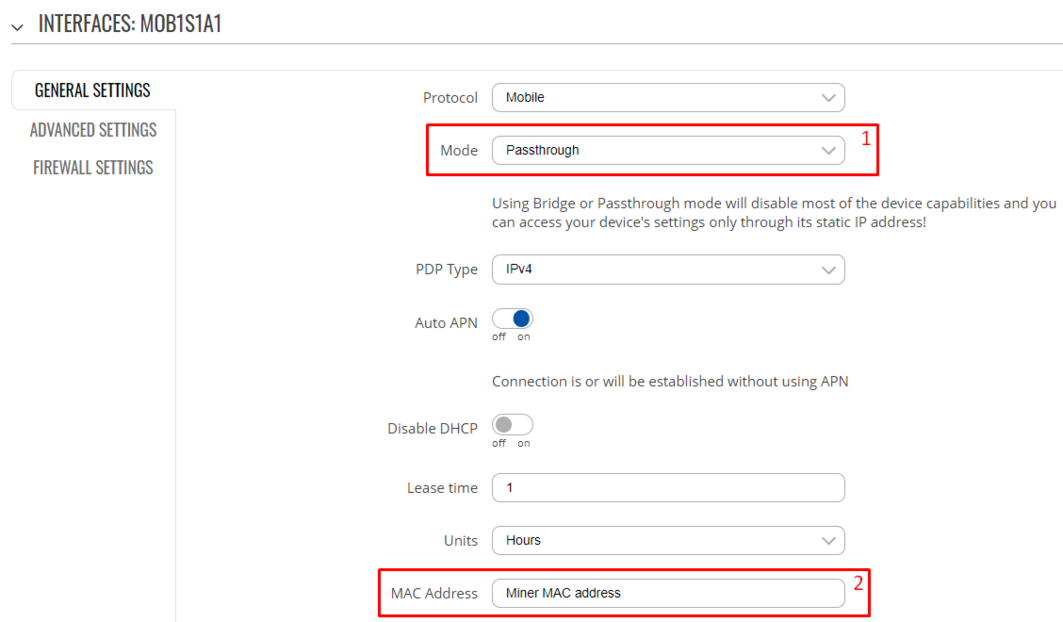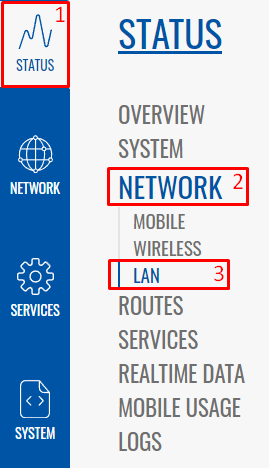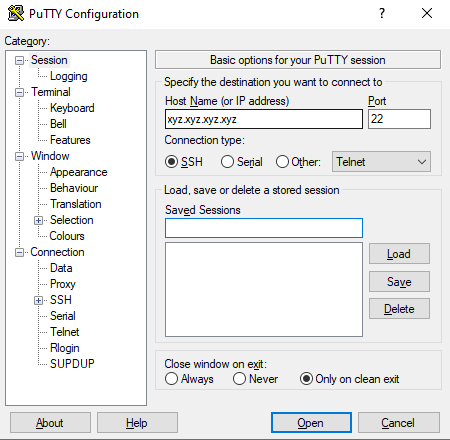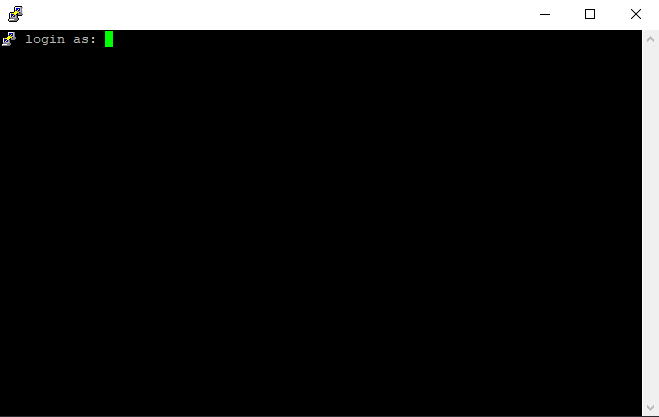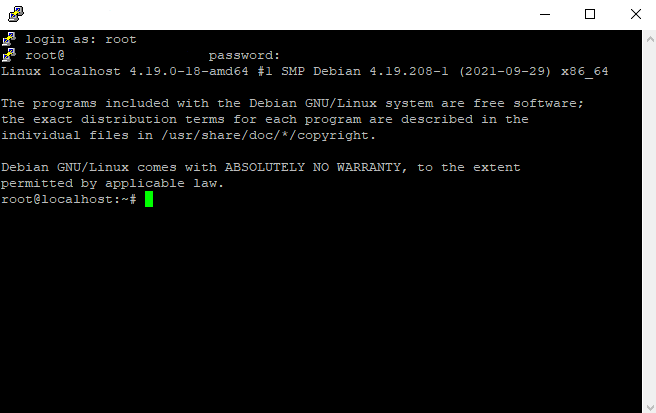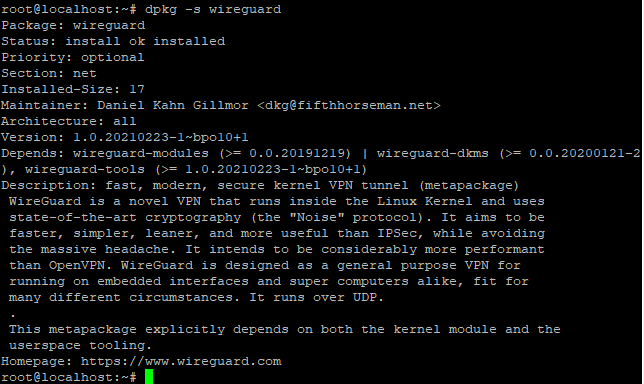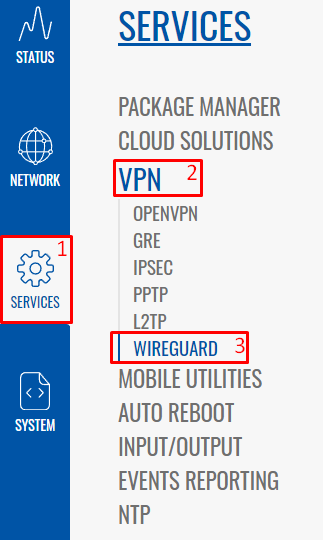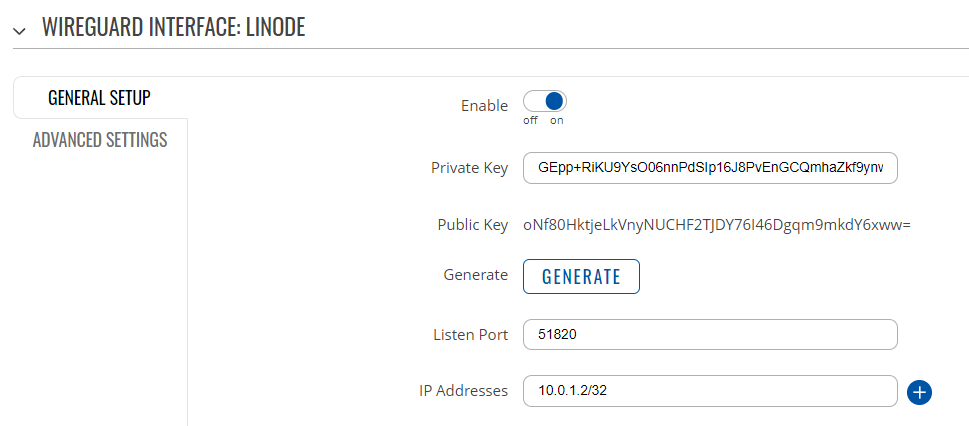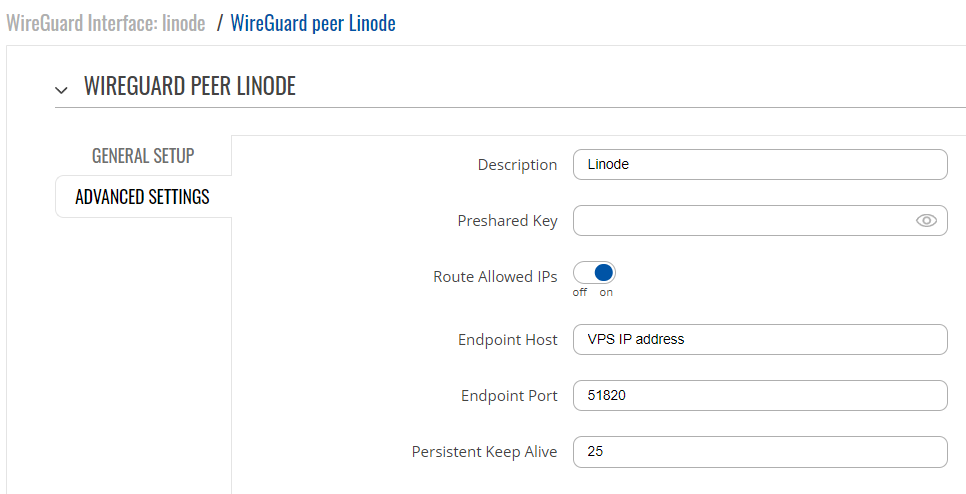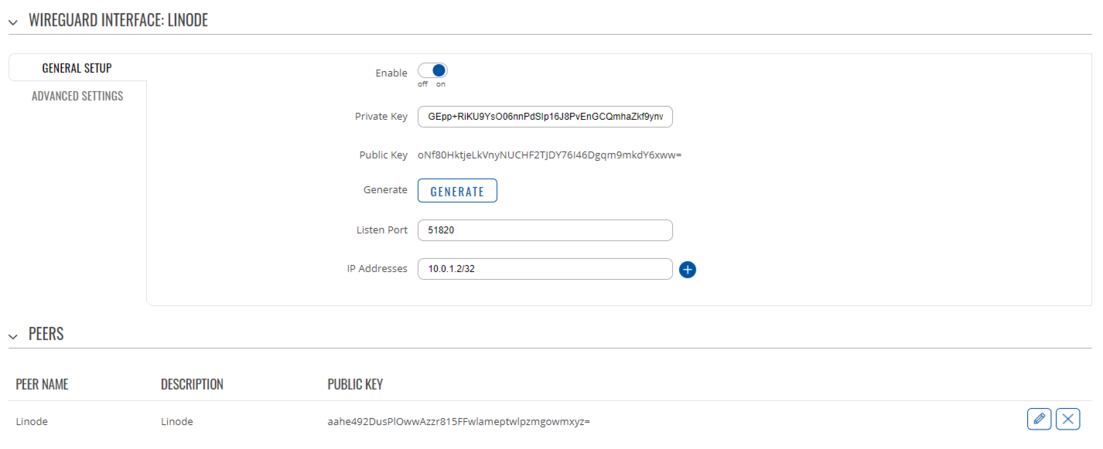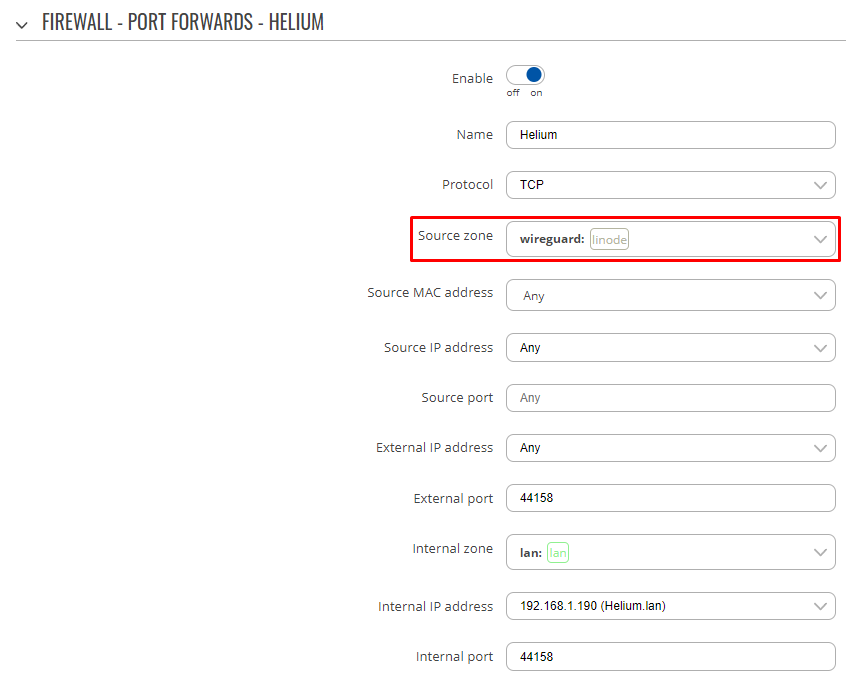Providing connectivity for Helium miners using the RUT240
Note: this article and all of its configuration examples given here have been configured using the new RUTOS firmware RUT2_R_00.07.01.2 which runs with a brand new WebUI. A configuration example with the legacy firmware WebUI can be found here: Providing connectivity for Helium miners using the RUT240 (legacy WebUI)
For more information about firmware versions, please refer to RUT240 firmware wiki page.
Introduction
Due to the Helium miners gaining significant traction, it's rather necessary to understand how to make the miner work as efficiently as possible. To accomplish this task, it's highly recommended, according to the official Helium documentation, to create a port forward rule for incoming traffic to port 44158 (TCP) and redirect it to the Helium miner. In this article, 3 different methods are shown to accomplish this task, depending on available resources. Please note that before starting with the procedure, the following prerequisites must be met:
- RUT240 or any other Teltonika Networks router running RUTOS v7 firmware
- Ability to login and configure the router
- Pre-configured router using the initial setup wizard
- Mobile internet connectivity
In this article all examples are provided using the RUT240 router.
Prerequisites
Before getting started with any further configuration, the router must be prepared using the setup wizard. This wizard is used to configure basic settings on the router.
Additionally, it's highly recommended to understand the difference and recognize the distinction between public and private IP addresses. A short article regarding this can be found on our wiki FAQ: Private and Public IP Addresses.
Initial router configuration
To begin, power on the router and wait for it to boot up. Once it’s up and running, open up your internet browser and enter the following address in the browser:
https://192.168.1.1
If you get a warning about an insecure connection, click on “Advanced” and “Proceed to 192.168.1.1 (unsafe)”.
This warning occurs due to browser not trusting the internal router web server certificate, generated by the router itself.
Note: If it’s a brand-new router, or if the router’s configuration has been reset, then the device will always have an IP address of 192.168.1.1.
Next, enter the following details into username and password fields, then click “Login”:
Username – admin
Password – admin01
Once logged in, a prompt to change the password will be shown. Change password to meet the requirements, then proceed by clicking “Submit”:
Next, we need to configure basic settings to prepare our router. A setup wizard will open after entering the new password. In Step 1 of setup wizard change the "Configuration Mode" to "Advanced", then click on “Sync with browser” option and choose your desired time zone. Once done, click on “Next”.
In Step 2 of setup wizard we can change our local area network configuration, but it is unnecessary. For now, it’s recommended to leave it as-is. Click on “Next” to proceed.
In Step 3 you can configure basic mobile connectivity settings. These settings will depend on your mobile operator and your mobile internet plan. Once all the necessary settings have been entered, or if there are no changes needed, click on “Next”.
In Step 4 it’s possible to enable/disable the WiFi, change the name of the wireless network along with its passphrase. After the changes have been made, proceed to the next step by clicking “Next”.
In Step 5 we can connect our router to Teltonika Remote Management System. More information about the Teltonika RMS can be found here.
To finish the setup wizard, click on “Finish”. The overview page will open. At this point it is recommended to confirm whether there is internet connectivity by going to any internet website which shows your external public IP address (for example https://www.whatismyip.com/):
For extensive details about the initial configuration of the router, please refer to our wiki page here.
Scenario #1: Port forwarding with public IP address
Extra prerequisites for scenario #1
For the Helium miner to be reachable by any device on the internet, it’s necessary to allow and forward any incoming internet traffic via port 44158 (TCP) to the Helium miner. In this specific configuration scenario, an example with the Teltonika RUT240 router, running the new RUTOS firmware, will be provided.
For this configuration example to work, the following general criteria must be met:
- Router must be online with public external WAN IP address on its mobile interface using a mobile SIM card
- Helium miner must be connected to the router
Configuring static LAN IP lease for the Helium miner
While not mandatory, it is highly recommended to add a LAN IP reservation for the Helium miner to make sure port forward rule, which will be defined later, always points to the correct device. In order to do this, navigate to LAN "Network>Interfaces":
Once there, edit the default LAN interface by clicking the pencil icon:
LAN configuration page will open. Scroll all the way down to the "Static lease" section and add a new instance:
Configuration window will load. Enter MAC address of the Helium miner and any desired IP address (can be current LAN IP) in their respective fields:
When done click on “Save & Apply” button to apply the changes. The final result should look similar to this (MAC and IP may differ):
When done, click on “Save & Apply” button to save the changes on the LAN interface.
Configuring the port forward rule
If the internet is up and running, proceed to the port forward configuration page by navigating to "Network>Firewall>Port Forwards":
Once there, enter the following settings in specified fields:
“Name” - name the port forward rule. In this configuration example, we’ll be using Helium as the name of this rule
“External port” - enter 44158
“Internal IP address” - select your Helium miner LAN IP address (starts with 192.168.1.X).
“Internal port” - enter 44158
Once every field has been filled in, click on “Add”.
A new window will pop up. Change the "Protocol" field from "TCP+UDP" to "TCP" only. Once done, scroll down to the bottom of the window and click on "Save & Apply" to save the settings. The configuration window should look like this before saving the settings (internal IP address field may differ):
If every configuration field is correct and the rule has been applied, the port forward rule should appear in the port forwards table in a similar fashion:
Verifying the port forward rule
It’s highly recommended to check and verify whether the Helium port (44158, TCP) is open from the internet side. To do this, go to any website that can verify port forwarding (for example: https://www.yougetsignal.com/tools/open-ports/). Once there, enter the current public external WAN IP address or the remote address of VPS (public IP of your VPS) and port number 44158 when checking for port forward. If it’s working, the port should be open:
Scenario #2: Configuring the passthrough mode
Extra prerequisites for scenario #2
For the Helium miner to be reachable by any device on the internet, it’s necessary to allow and forward any incoming internet traffic via port 44158 (TCP) to the Helium miner. In this specific configuration scenario, an example with the Teltonika RUT240 router passing its external public WAN IP address to the Helium miner directly will be provided.
For this configuration example to work, the following general criteria must be met:
- Router must be online with public external WAN IP address on its mobile interface using a mobile SIM card
- Helium miner must be connected to the router
Configuring the passthrough mode on the RUT240
In order to configure the passthrough mode on the new RUTOS firmware navigate to the "Network>Interfaces":
Once there, find interface with name “MOB1S1A1” and edit it by clicking a pencil icon next to it:
A new configuration page will pop up. In this configuration page make sure to modify the following settings:
“Mode” - change from NAT to Passthrough
“MAC address” - enter your Helium miner MAC address:
If the MAC address of Helium miner isn’t known, you can check it by navigating to “Status>Network>LAN” page.
There, MAC address of Helium miner as well as its current LAN IP address should be visible:
After the necessary configuration has been set, make sure to apply configuration by scrolling down to the bottom of mobile interface configuration page and click “Save & Apply”. Eventually, the Helium miner should get an external IP address from the router.
Optional configuration: set WAN port as LAN
Once the passthrough mode is enabled, the router can still serve local IP addresses to any other device connected to the router. If needed, the WAN interface can be setup as a LAN interface to provide connectivity to any additional device or a switch. To accomplish this, follow the steps as described in another wiki article here: Setting up WAN as LAN
Scenario #3: Private WAN IP solution
Extra prerequisites for scenario #3
Port Forwarding with a private WAN IP is generally an impossible task without the interference of internet service provider. This is because private (RFC1918) IP addresses cannot be routed on the internet as well as some other issues like CGNAT. Therefore, it is necessary to apply a different method that will allow the router and, concurrently, the Helium miner, to be reachable by the outside world via specified external port.
As for the Helium miner, the principle for incoming connectivity is relatively simple - it's necessary to permit any incoming internet traffic through the router via port 44158 (TCP) and forward any such traffic to the Helium miner. Due to private IPs not being reachable from the outside world for any sort of incoming connections, a different method must be employed to make this scenario work.
In order to get started with this procedure, the following requirements must be met:
- Router must be online with internet connection
- Virtual Private Server (VPS) with a public IP address
- Ability to create and install a Virtual Machine (VM) in the VPS with possibility to setup WireGuard
- Helium miner must be connected to the router
In this specific example the Teltonika Networks RUT240 router running the RUTOS firmware is used as an example. For VM hosting, Linode is used as a VPS provider to create and manage VM deployments. Debian 11 is used as an operating system on the VM.
Preparing and setting up VM on VPS
In this example Linode cloud environment is used for instructions. Begin the procedure by creating a VM on VPS. Once signed-in, click on "Create" and then choose "Linode":
 Next, from "Choose a distribution field" select "Debian 11" as the desired image.
Next, from "Choose a distribution field" select "Debian 11" as the desired image.
Alongside that, make sure to select the preferred region from a given list. In this example "Frankfurt, DE" is selected as the preferred region.
For the "Linode plan" section it is enough to select a "Shared CPU" with "Nanode 1 GB" plan for this specific use-case. It may be necessary to adapt and select a different plan, depending on the usage of VM resources.

It is also highly recommended to use a secure root password as well as deny incoming traffic to VM via a public IP address in order to protect VM from being accessed by unknown actors. To configure a root password for Linode VM, set it up before creating the VM:
To finish with this section, select "Create Linode" field on the right-hand side of the website. It is always possible to adjust certain settings but the basic configuration is now complete.
Warning! Before starting with configuration of the VM it is highly recommended to deny any incoming traffic by adding a firewall rule to drop all incoming traffic from every external public IP (except your own). Additionally, allow any incoming traffic only from trusted external IP addresses. Lastly, permit any incoming traffic via port 44158 (TCP) to the VM.
Configuring VM and setting up WireGuard tunnel
Once the VM comes online it will be possible to connect to it via VPS provider's client. Alternatively, it is possible to use a third-party SSH client in order to connect to our VM. In this example a third-party SSH client (PuTTY) is used to establish connectivity to the VM. In order to connect to the VM it is necessary to enter the following information into PuTTY client and click "Open":
Note: The IP address in this example has been redacted. Instead of xyz.xyz.xyz.xyz enter the external IP address that's been assigned to a newly created VM.
If everything worked correctly then the following window will pop up with a prompt to login:
To login, enter username "root" and the password that was entered before creating the VM. If the login is successful, the following information will be displayed in the SSH client window:
Important! If the VM is running older Debian version (Debian 10 or lower), when trying to install WireGuard package, an error will occur “E: Unable to locate package wireguard”. Below is an example of the error in question:
It’s necessary to add buster backports repository to install this package. To resolve this, enter the following command in CLI:
sudo sh -c "echo 'deb http://deb.debian.org/debian buster-backports main contrib non-free' > /etc/apt/sources.list.d/buster-backports.list"
After executing the command above, it is recommended to verify if the command worked. To do so, enter the following line in CLI:
cat /etc/apt/sources.list.d/buster-backports.list
An informational message with the following output will appear:
Initial setup of tools and services in VPS
To begin the installation process, issue the following commands. These commands will make sure the operating system is up to date and, additionally, it will install iptables and wireguard packages. Enter the following command:
apt update && apt upgrade -y && apt install iptables -y && apt install wireguard -y
This command will make sure your system is up to date, install newest base packages. Then it will install iptables package as well as wireguard package. You can verify if package was installed by issuing dpkg -s <package name> command in the CLI. For example, to confirm if wireguard has been installed successfully, type in dpkg -s wireguard and then press enter. The following output should be shown (output may differ slightly, depending on currently installed WireGuard version):
Generating WireGuard key pairs
In order for the VPN tunnel to work, both VPS and router must have their own public and private key pairs. The private key will be used for data decryption coming from the peer while public key will encrypt traffic going to the peer.
Warning! Never share or put your private key in public space.
To generate key pairs on VPS, enter the following commands into the CLI:
cd /etc/wireguard/
wg genkey | tee privatekey | wg pubkey > publickey
First command changes your current location in file system to the wireguard folder while the second one generates private key from which the public key is generated accordingly.
To verify whether the key generation was successful, enter the following commands:
cat privatekey
cat publickey
If the keys have been generated successfully, these commands will show the following output (the keys will differ, this is just an example, do not use these!):
Configuring WireGuard tunnel on the router
Note: WireGuard is implemented in RUTOS by default which means there is no need to install any additional packages. If, for some reason, WireGuard package is missing on the router, install it by navigating to "Services>Package manager" and searching for "wireguard" package.
Once the internet is up and running on the router, in the WebUI navigate to "Services>VPN>Wireguard" in order to start configuring the tunnel:
Add new instance with any name. In this example "linode" will be used as name for our Wireguard interface on router side.
Once it's created, a new window will open. Click "Generate" to generate private & public key pairs. When key pairs are visible, make sure to copy the public key from router, it will be needed later for WireGuard configuration on VPS side. Next, enter the following configuration in specified fields:
"Listen port": 51820
"IP Addresses": 10.0.1.2/32
The configuration should look something like this (the public key will differ, don't copy it from here!):
Next, click on "Advanced settings" on the left side of the configuration page and fill in the following line:
"MTU": 1420
Leave the metric empty. Once done, move to the bottom of the configuration page and add a new peer by entering its name in the "Add new instance" field:
Once the peer configuration window opens up, fill in the fields as follows:
"Public Key": copy and paste the public key of your peer (public key which was generated by the virtual private server)
"Allowed IPs": 10.0.1.1/32
When done, click on "Advanced settings" section and fill in the fields as follows:
"Description": Linode
"Preshared key" - leave field empty
"Route allowed IPs" - enable the option
"Endpoint host" - IP address of VPS (public IP)
"Endpoint port" - enter 51820 if not already entered
"Persistent keep alive" - 25 (recommended value)
The final result of WireGuard instance configuration on the router side should look something like this (public keys will be different):
Configuring static IP reservation for the Helium miner
While not mandatory, it is highly recommended to add a LAN IP reservation for the Helium miner to make sure port forward rule, which will be defined later, always points to the correct device. In order to do this, refer to this section: #Configuring static LAN IP lease for the Helium miner
Adding a port forward rule to the router
Wrapping up with the router configuration, it's necessary to create a single port forward rule so that router knows what to do with any incoming traffic that's got a destination port of 44158, TCP. To accomplish this, navigate to "Network>Firewall>Port Forwards":
Once there, enter the following settings in specified fields:
“Name” - name the port forward rule. In this configuration example, we’ll be using Helium as the name of this rule
“External port” - enter 44158
“Internal IP address” - select your Helium miner LAN IP address (starts with 192.168.1.X).
“Internal port” - enter 44158
Once every field has been filled in, click on “Add”.
A new configuration window will pop up. Edit the protocol from "TCP+UDP" to "TCP" only and change the "Source zone" by selecting the zone from "wan" to "wireguard" (this is the most important step when configuring this port forward!):
Leave everything else as-is, then go to the bottom of the page and click "Save & Apply".
Adding additional configuration to VPS WireGuard file
For the very last configuration step there are some additional firewall rules and WireGuard configuration that must be added on the VPS. Proceed with this step by going back to the VPS configuration with PuTTY via SSH. Once there, start by editing the Wireguard configuration file. Before copying this configuration, make sure to change PrivateKey field by entering the private key value that was generated earlier by the VPS. To double-check it, enter the following commands in the CLI of VPS:
cd /etc/wireguard/
cat privatekey
Additionally, make sure to edit PublicKey field. Enter the public key generated by your router in the field. Leave everything else as-is.
[Interface]
ListenPort = 51820
PrivateKey = Copy-paste the Private key generated by the VPS from earlier commands
Address = 10.0.1.1/24
MTU = 1420
PostUp = iptables -A FORWARD -p tcp --tcp-flags SYN,RST SYN -j TCPMSS --set-mss 1240
PostUp = iptables -A FORWARD -i wg0 -j ACCEPT; iptables -t nat -A POSTROUTING -o eth0 -j MASQUERADE
PostUp = iptables -A FORWARD -i eth0 -o wg0 -p tcp --syn --dport 44158 -m conntrack --ctstate NEW -j ACCEPT
PostUp = iptables -A FORWARD -i eth0 -o wg0 -m conntrack --ctstate ESTABLISHED,RELATED -j ACCEPT
PostUp = iptables -t nat -A PREROUTING -i eth0 -p tcp --dport 44158 -j DNAT --to-destination 10.0.1.2
PostUp = iptables -t nat -A POSTROUTING -o wg0 -p tcp --dport 44158 -d 10.0.1.2 -j SNAT --to-source 10.0.1.1
PostDown = iptables -D FORWARD -p tcp --tcp-flags SYN,RST SYN -j TCPMSS --set-mss 1240
PostDown = iptables -D FORWARD -i wg0 -j ACCEPT; iptables -t nat -D POSTROUTING -o eth0 -j MASQUERADE
PostDown = iptables -D FORWARD -i eth0 -o wg0 -p tcp --syn --dport 44158 -m conntrack --ctstate NEW -j ACCEPT
PostDown = iptables -D FORWARD -i eth0 -o wg0 -m conntrack --ctstate ESTABLISHED,RELATED -j ACCEPT
PostDown = iptables -t nat -D PREROUTING -i eth0 -p tcp --dport 44158 -j DNAT --to-destination 10.0.1.2
PostDown = iptables -t nat -A POSTROUTING -o wg0 -p tcp --dport 44158 -d 10.0.1.2 -j SNAT --to-source 10.0.1.1
[Peer]
PublicKey = Copy-paste the Public key generated by the router
AllowedIPs = 10.0.1.2/32
Endpoint = 0.0.0.0:51820
Warning! Remember to edit the private and public key values if you haven't, otherwise the VPN tunnel will not work at all!
After all necessary values for keys have been edited, we can create a new configuration file and copy provided commands, then save the configuration file. In this example, “nano” text editor is used. Enter the following command in CLI and copy paste the configuration above:
nano /etc/wireguard/wg0.conf
Note: to paste a command using PuTTY, simply copy this code and switch back to PuTTY, then enter the nano command and right click once in the empty space of PuTTY client window.
To finish editing and save your file, click CTRL+S (save) and CTRL+X (exit).
Before wrapping up and establishing the tunnel, we need to add some additional configuration to our system file. Firstly, enable forwarding with the following command:
echo net.ipv4.ip_forward=1 >> /etc/sysctl.conf
To wrap up this section, enter the following line in CLI:
sysctl -p
Starting the WireGuard interface
Finally, it's time to bring our WireGuard VPN tunnel online. If every step has been completed successfully up until this point, then it will be possible to bring up the Wireguard interface and establish a secure tunnel between the VPS and the router. Enter every command provided below in order.
Begin by adding Wireguard service to startup. This will bring Wireguard tunnel back up in case of unexpected shutdown/reboot of VPS:
systemctl enable [email protected]
systemctl daemon-reload
Next, start VPN service:
systemctl start wg-quick@wg0
Once done, enter the following command.
systemctl status [email protected]
If everything up until this point has been done in a correct manner, the following output should be shown in the output of CLI:
This was the last step of this configuration example. At this point, the tunnel should be up and running and there should be connectivity between the VPS and the router. Additionally, it’s highly recommended to check and verify whether the Helium port (44158, TCP) is open from the internet side. To do this, go to any website that can verify port forwarding (for example: https://www.yougetsignal.com/tools/open-ports/). Once there, enter the remote address of VPS (external IP of your VPS) and port number 44158 when checking for port forward. If it’s working, the port should be open:
External links
Resources used in this guide:
- https://docs.helium.com/troubleshooting/network-troubleshooting/ - Helium recommendation regarding the port forward
- https://datatracker.ietf.org/doc/html/rfc1918 - RFC of private IP addresses
- https://www.putty.org - PuTTY client for SSH connection
- https://teltonika-networks.com/product/rms - Teltonika Remote Management System
- https://www.whatismyip.com - Online tool to check external IP address
- https://www.yougetsignal.com/tools/open-ports - Online tool to verify open/closed ports

